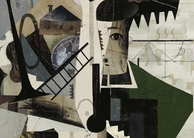The Development of Modern Feminist Thought: A Summary
By
2016, Vol. 8 No. 02 | pg. 1/2 | »
IN THIS ARTICLE
Who is a woman? What does it mean to be a woman? Is she a mother-daughter-wife-sister? Or is she more than that? What is her role in society and how does it play out in various institutions? Does she really face oppression? If so, how? Is Feminism really an answer to her problems? And does she need emancipation? Who will bring about this emancipation and how? These are certain basic questions that need to be asked again and again in every epoch. The patriarchal superstructure has adapted to the various material changes in the last 5000-6000 years. But a marked change has been seen in the last couple of decades, as the market has incorporated the agenda of feminism in itself. A formal denial of patriarchy is now part of the dominant discourse. But one must be weary and unmask the patriarchal vestiges that still survive in it. It is in this light that one should ask the above question again. This paper looks to trace three broad themes in the scholarship of feminism: the conceptualization of women as a socio-political category, the various ideas of women’s oppression, and the idea of emancipation. In particular, the work of four influential scholars—Mary Wollstonecraft, Friedrich Engels, Emma Goldman and Simone de Beauvoir—is used to provide a brief summary of the subject and its development. Each provides foundational ideas in the scholarship of feminism, in addition to representing the shifting discourse in the two major waves of feminism in modern history. Excerpts of the writings of each of the aforementioned scholars are examined from Alice S. Rossi’s Feminist Papers: from Adams to de Beauvoir1.Mary Wollstonecraft and the False System of EducationMary Wollstonecraft was a British feminist author, writing during the French Revolution. Her book A Vindication of the Rights of Woman (1792) came as a response to the report in France’s National Assembly by Charles Maurice de Talleyrand-Périgord’s. The report argued for a mere domestic education for women, along the beliefs of the French philosophes that women must derive virtue from their relations with men. In critique, Wollstonecraft “did for woman what Rousseau tried to do for the natural man and Paine for the rights of man.”2 She postulates that education formalizes patriarchy. Wollstonecraft points out that the female is naturally inferior to the male in terms of strength. However, a “false system of education” deprives women of their right to virtue3, by not allowing them “sufficient strength of mind”4. They are “rendered…insignificant objects of desire”5 through false-education which begins right from their childhood as they are “taught by the example of their mothers” characteristics like “cunning…shortness of temper…outward obedience…”6 She thus develops the idea of an oppressed woman, equating her with a soldier. She writes that
Thus, Wollstonecraft attacks Rousseau openly; who argues that obedience is the grand lesson of virtue for women. She finds emancipation in non-private and non-domestic education. Her idea of a perfect education is one that is an “exercise of understanding…to strengthen the mind and form the heart”8. This mind would end blind obedience (to patriarchy).9 Wollstonecraft’s liberated woman would be one who exercises virtue, not sourcing it through her male counterparts, but on her own. She would be rid of all “epithets of weakness”10, ‘manners’ and ‘elegance’, which are inferior to virtue.11 And only thus can an ideal world be created, one where Truth is the same for both man and woman and the principles that govern their duties are uniform.12 Friedrich Engels and Class OppressionWollstonecraft was arguably the first feminist, in the modern sense of the word. It is natural that her explanations and ideas would have certain loopholes and/or vestiges of the patriarchal past she was trying to come out of. This does not mean that her theories proved to be worthless. The later feminists based their ideas upon her arguments, especially in the 19th century. One of them was Friedrich Engels. In his book The Origin of the Family, Private Property and the State (1884), Engels brings, for the first time, class dynamics into gender relations. He adds to Marx’s idea of class antagonism in marriage that
Elaborating on when this antagonism first appeared, Engels traces it back to the beginning of settled agriculture. It is here that the notion of private property originated, leading to social organization on the basis of monogamous marriage. This monogamous marriage, he further states, led to the unconditional slavery of woman, with the main purpose being to produce children of “undisputed paternity…because these children are later to come into their father’s property as his natural heirs.”14 And thus, monogamy turned into perpetual prostitutional slavery for women, who subsequently became adulterous, whereas the man gave himself to hetaerism.15 Although monogamous marriage has always been contractual, it is determined by either families or by class.16 True choice,17 as Engels puts it, is only exercised amongst the Proletarian class. Sexual love is the norm amongst workers; both parties are more or less equal. They are free from inequalities of wealth as both sexes work as breadwinners. Also, because neither owns any property, the notion of inheritance stands void.18 Thus, a Social Revolution, Proletarian in nature, can achieve equality of sexes. Full freedom of marriage can only be established through the abolition of capitalist production and private property. Although he hints that the real nature of monogamy would come out after the Revolution, he declares that it will only be determined by a generation that has grown up without knowing private property and unequal contracts of marriage ties.19 Engels20 and his ideas inspired the wave of feminism across the globe in the 19th and early 20th centuries. However, there were certain problems that arose within the same. Emma Goldman’s Idea of False EmancipationEmma Goldman wrote her essay The Tragedy of Woman’s Emancipation in 1906. By this time, feminism had gained a stronghold in politics. However, the First Wave of Feminism was nearing its twilight. Goldman highlighted its problems and for being a non-conformist to the movement in her time, she was denounced by many. However, her analyses proved to be instrumental a few decades later. Goldman rejects the movement saying that emancipation of women turned into a new form of oppression. She argued that the movement had been reduced to “a battle of the sexes” and stood “for a reckless life of lust and sin, regardless of society, religion and morality.” Its scope was too narrow to permit “boundless love and ecstasy…deep emotion of the true woman…in freedom.”21 It merely involved a formal emancipation; only the overt shackles had been broken by it, further creating newer, inner shackles. Thus, she argues, the emancipated woman is an artificial being22. She has been robbed of her essence, emptied her soul and not allowed the inner fetters to be broken.23 She is not trained to overcome her historical restraints. Thus, she is unable to match the male counterpart. The only solution to these problems is for the woman to
Thus, women need to emancipate themselves from emancipation, as Goldman puts it25. Goldman acknowledges that the position of the working girl is far better than her higher-class counterpart; as the latter is plagued by a hollow, dull, restless and incomplete life. Thus, emancipation should assure all humans the right to love with the right to be loved.26 Goldman proved to be instrumental in pointing out the loopholes in First Wave Feminism. She was highly influential in the Second Wave, as many feminists now broadened the idea of Woman, her oppression and her emancipation. Simone de Beuvoir’s Second SexThe Second Wave of Feminism began in the post-modern era and Simone de Beauvoir was one of Europe’s leading feminists.27 She was politically very active and was closely associated with Jean-Paul Sartre. Her book The Second Sex is full of details of her private life, which she had no hesitation in making public. She shifted the discourse into new directions, arguing that the conceptualization of women was in itself patriarchal. They were defined (as subjects, Other) with relation to men (as the One, Absolute).28 This has not allowed women their emancipation. This is because women have been unable to break their relationship with men; they have no separate consciousness, shared past, history or religion.29 Men have further tried to prove how women are subordinate through the means of philosophy, law, religion, literature and science.30 Thus, she gave newer perspectives in conceptualizing women. For her, the oppressed woman “makes herself a thing” and tries to make “herself prey to reduce man to her carnal passivity” in which she occupies herself perpetually. Au contraire, the emancipated woman is one who wishes “to be active, a taker and refuses the passivity man means to impose on her”; all of which are “masculine values”31 She points out that this emancipation failed to happen as both sexes failed to recognise each other as peers. The women dream to perpetuate their submission (by seeking salvation through passivity) and men, their identification (of themselves as superiors, through a devaluation of femininity). Women are, since childhood, taught to praise lofty values of love, devotion, submission; they are deterred of taking charge of their own life, thus allowing themselves to be reliant upon their father, lover, brother, husband and so on. Thus, in saying so, she rejects the idea that the nature of women is a universal given. She is just one step away from Judith Butler (who argues that gender is ‘performative’) in saying that the woman is constructed. Thus, a social evolution is the only means through which woman can shed their old skin and cut her own new clothes.32 Both love and sex can be great tools of transcendence to emancipation as Simone de Beauvoir argues. It is key for the adolescent, the teen to explore these freely, if contingency is to translate into transcendence33. Thus,
Of the future, Simone de Beauvoir elucidates that one must not try to define it today. It is up to the imagination of those who live in the tomorrow to determine it. She claims that it will be novel; but not without love, happiness, poetry, dreams.35Continued on Next Page » Suggested Reading from Inquiries Journal
Inquiries Journal provides undergraduate and graduate students around the world a platform for the wide dissemination of academic work over a range of core disciplines. Representing the work of students from hundreds of institutions around the globe, Inquiries Journal's large database of academic articles is completely free. Learn more | Blog | Submit Latest in Women's & Gender Studies |
















